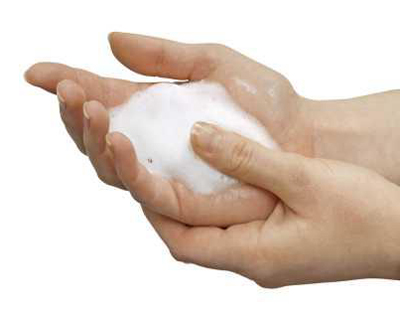The Truth About Sodium Laurel Sulfate

Some say it is the most powerful foaming cleanser approved for hair and skin and some say it is possibly carcinogenic and may cause skin irritation. What's the real take on this chemical so commonly used in soaps and shampoos.
Sodium laurel sulfate is what makes shampoos lather, toothpastes foam and bubble baths bubble. This chemical is very commonly found in personal care products. Sodium laurel sulfate is also known as sodium laureth sulfate, duponol and dodecyl sodium sulfate. This white powder has a soapy feel to the touch, not unlike laundry detergent. It has a molecular weight of 288.38 and dissolves easily in water.
FDA Regulations
Sodium laurel sulfate is not included on the list of more than 900 chemicals that the State of California believes cause cancer. The FDA certifies that sodium laurel sulfate is recognized as safe, or GRAS, when used in food within certain limits. For example, this chemical is safe if used in concentrations less than 1,000 parts per million in egg white solids or as a whipping agent in the preparation of marshmallows if the concentration does not exceed 0.5 percent by weight. This GRAS certification is never granted if the ingredient causes cancer.
Risk Issues
Although sodium laurel sulfate is not carcinogenic, in extremely high concentrations it can be an irritant for some people, especially if it remains on the skin in. However, an article appearing in the July 2010 "International Journal of Toxicology" reports that in practice it is not "regularly seen to be irritating because of the formulations" in which it is used. It is generally agreed that skin irritation risk only applies when the individual is handling sodium laurel sulfate powder in concentrations between 90 to 100 percent. This effect is minimized when the chemical is used in lower concentrations, such as in shampoos.
Perceived Risk
Many websites characterize the claim that sodium laurel sulfate causes cancer as an urban myth. This misconception may have started because the chemical can be used with chemicals that do cause cancer. For example, traces of carcinogen 1,4-dioxane were found in concentrations as high as 279 parts per million in personal care products such as shampoos.